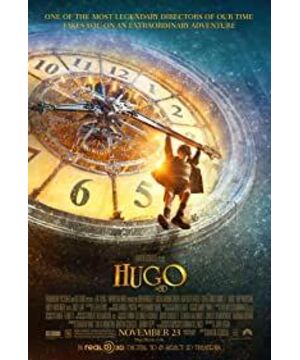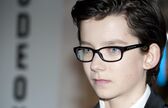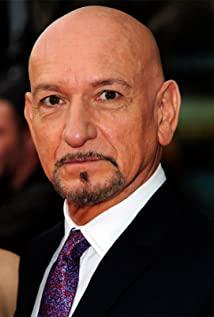"Hugo" is the "movie" with the strongest 3D effect so far, not one of them. Perhaps, everyone has heard Kashen praised this film as "the best 3D photography I have ever seen". When I didn’t watch the movie, I thought it was a common practice in Hollywood circles—because I heard Kashen praised Uncle Pei’s "Transformers 3" before. As a result, hum—but, I've also watched it. After being infatuated with this film for a while, I have to admit that at least what Kashen said this time is not polite. So, what is the magic of "Hugo" compared to previous 3D movies? The first thing the audience can clearly feel is the coherence and roundness of the space presented on the picture-yes, I have to use the word "round and round" with a beautiful thought in order to express my love for the 3D reproduction of the film. I used to watch 3D movies—whether it’s live action or animation, and whether it’s native 3D or post-transformation — I always felt that the "layering" was too strong. This feeling of image layering is not a good thing for 3D images, because what it presents to you is actually not a complete space, but just the arrangement of different image layers in the vertical space. The transition between layers is very unnatural. The deep space feeling of "Hugo" is no different from the ordinary visual experience of everyone. From the objects in front of your eyes to the farthest objects, lines rather than segments connect them. In the film, there is a close-up shot of a station inspector leaning over. I think there is no more "round" feeling than that which proves the three-dimensional effect of this film... I couldn't help but reach out and touch the beard of Borat who was right in front of me. . ^_^Basically all 3D movies have such close-up shots that "push" in front of you, but the only "Hugo" is the whole head effect that I have seen without any stretching and deformation, from the nose to the back of the head. The contours are in line with the real experience of the audience staring at each other up close. In the past, 3D movies passed the level of "separation of layers", and it was difficult to maintain a continuous three-dimensionality in time. Even in "Avatar", which pioneered the 3D boom, some of the scenes are very flat-there is no big difference between wearing 3D glasses or not, but "Hugo" can magically maintain sufficient depth and sense of envelopment at all times. This fully proves that shooting a 3D movie is not a "craftsmanship" that only needs to change a 3D camera, but an "artistic job" that requires unique vision and ideas. Directors who are ready to set foot in the 3D field and enthusiasts who want to play 3D photography should watch this film carefully to see how old Martin plays with 3D space performance. According to my previous assumptions, a good 3D should provide viewers with a constant visual box-about half behind the screen and half in front of the screen; the visual effects presented in this hexahedron should be in line with what a normal person would in reality. Three-dimensional experience. Facts have proved that this idea of my is just a fancy idea of an unlearned second-force young man. Old Martin used "Hugo" to prove that, like the photography skills of traditional 2D movies, there are many tricks to play in 3D; moreover, because the flexible use of 3D Rig can be superimposed on the traditional shooting skills, this is equivalent to a big deal. Expanded the spatial expression of the film. For example, the easiest way is to use a combination of different focal depths and depths of field with traditional techniques, and you can also adjust the distance between the two lenses on the 3D Rig to achieve different depth effects. In other words, if you compare the three-dimensional experience with a box, the depth of the box in "Hugo" can be changed. To be precise, it is the cue to control the three-dimensional space according to the scene and the psychology of the character. What’s more interesting is that there are a lot of motion shots in "Hugo", whether it is the long computer-synthetic shot that David Fincher has used most for a while-such as the magical opening, or the follow-up shot of Steadicam, If you look closely, you will find subtle changes in the 3D depth perception in the same lens. Among them are not only the credit of the photographer and the lens operator, but also the separate 3D Rig Operator (responsible for adjusting the distance between the stereo cameras at any time), and the Cameron Pace Group (the 3D technology company that Cameron and his 3D camera invention partners combined) ) The strong technical support provided on site, of course, it is Martin himself who controls the final 3D effect of the film. It should be noted that the 3D effect of "Hugo" is not ostentatious. Therefore, you don't have to expect the effect of something flying directly to the eyeball. What makes me interested is that the 3D effect of this film does not give people the feeling of "show for you", but "bring you into the movie space"-this sounds very vulgar, because any movie should be So; but, after watching "Hugo", it is the first time that I have such a strong sense of "integration". So, without the gimmick effect of 3D, and the spectacle picture like "Avatar", how did "Hugo" be visually "fascinating"? This also depends on the extraordinary skill of the old man Martin.
View more about
Hugo reviews











